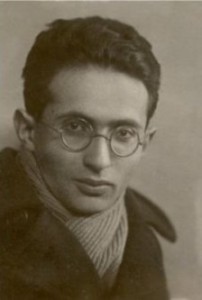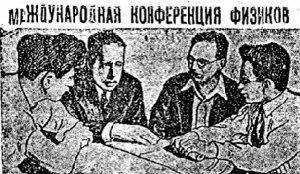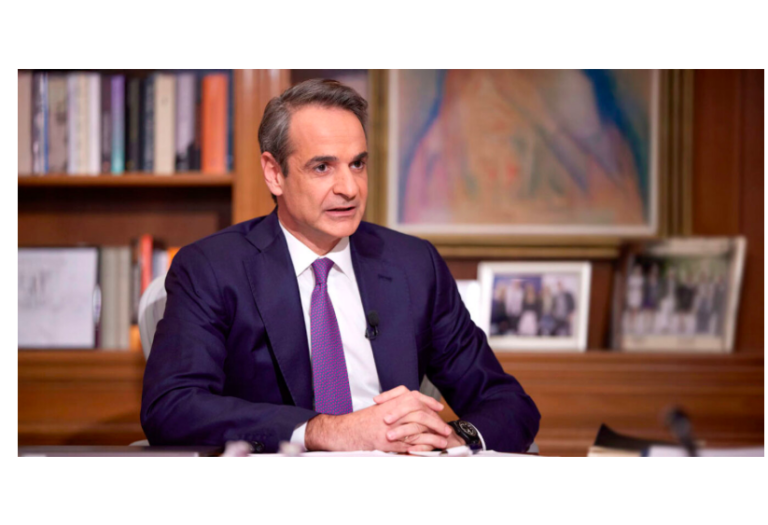What is the hottest problem in fundamental physics today? Physics aficionados most probably would answer: quantum gravity. Of all the fundamental forces of nature, only gravity still stands outside the rubric of the quantum theory. The difficulty of quantizing gravity has led to radical theories such as string theory, with its bold predictions of higher space dimensions and parallel universes. It’s unclear if these theories are “crazy enough to have a chance of being correct,” as Niels Bohr used to say. And too few people know the dramatic early history of this field.
In fact, the field of quantum gravity was born in 1916, even before physicists had properly explained the other fundamental forces, electromagnetism and the nuclear forces. Twenty years later, a young Russian physicist by the name of Matvei Bronstein realized that gravity would be the hardest force of all to quantize. But before he could do something about that, he was swept up in Stalin’s Great Terror and executed at the age of 30.
(Matvei Bronstein shortly before his arrest, courtesy of Gennady Gorelik)
Our modern understanding of gravity is based on Einstein’s general theory of relativity, but Einstein himself realized that it was incomplete. Shortly after publishing his most famous theory, he remarked that gravitational effects would cause electrons to spiral in on atomic nuclei. To stop that would take a quantum revision of general relativity. In 1916 he wrote: “Due to the intra-atomic movement of electrons, atoms would have to radiate not only electromagnetic but also gravitational energy, if only in tiny amounts. As this is hardly true in nature, it appears that quantum theory would have to modify not only Maxwellian electrodynamics, but also the new theory of gravitation.” (To be sure, the implosion of atoms would take 1030 years to complete. At the time, Einstein assumed the universe was infinitely old. If he had known it was only just a dozen billion years young, his argument would be less compelling.)
For Einstein, the gravitational instability of atoms was one of many reasons to search for a unified field theory. Quite a few theorists felt Einstein’s unification urge, although most of them gave up and turned their attention to real problems of atomic physics and to developing quantum mechanics. One was Wolfgang Pauli. Among Pauli’s many accomplishments was a theory he and Werner Heisenberg published in 1929, which applied quantum principles to electrodynamics. Their paper proclaimed that the same approach could be taken to gravity: “Quantization of the gravitational field, which appears to be necessary for physical reasons [referring to the Einstein’s remark cited above], may be carried out without any new difficulties by means of a formalism fully analogous to that applied here.”
Meanwhile, a young Russian physicist, Lev Landau, undertook to probe into the foundations of the quantum theory of electrodynamics. What troubled Landau was the question of how Heisenberg’s famous uncertainty principle, when combined with relativity, applied to electromagnetic fields. Landau claimed that such a relativistic uncertainty made it impossible ever to measure the field at a point. And if you cannot measure the field, even in principle, did the concept of a field really make any sense? If it didn’t, Pauli and Heisenberg’s approach fell apart.
It was Bohr who came to rescue Pauli and quantum electrodynamics in an article he wrote with Leon Rosenfeld in 1933. Notoriously obscure, the 60-page article identified the weak point of Landau’s thought experiment – namely, its assumption of point-like particles. Bohr and Rosenfeld explained why one should measure an average field in an extended region of space, not at a single point. However, Landau, with his famous passion for clarity, was not persuaded.
It was at this point that a close friend of Landau, Matvei Bronstein, entered the scene and — comprehended Bohr’s idea better than Bohr did.
In 1934 he published a short 3-page paper elucidating why the act of measurement did not call the concept of a electromagnetic field into question. You can always suppose the measurement apparatus to be arbitrarily massive, allowing the field to be measured to arbitrary precision. Bronstein was equally at home with both gravity and atoms, and here came the moment when he grasped why Pauli was too optimistic about quantum gravity. The reason is that, when it comes to gravity, mass is the gravitational analog of electric charge. You do not have freedom to choose mass and (gravitational) charge separately, as you do in electromagnetism. The more massive the apparatus is, the more it affects the force of gravity you are trying to measure.
In Bronstein’s full-dress research on quantum gravity, published in 1936, the most fascinating part was the essential difference between quantum electrodynamics and the quantum theory of gravity. Bronstein showed that the quantum limit of measurability would become apparent for particles with a certain characteristic mass, which is now known as the Planck mass (which Max Planck had introduced in 1900 with no reference to quantum gravity). Since gravity in general relativity is described by geometry, Bronstein concluded that the difficulty of quantizing gravity brought the entire nature of space and time into question: “The elimination of the logical inconsistencies … requires a radical reconstruction of the theory, and in particular, the rejection of a Riemannian geometry dealing, as we have seen here, with quantities which are unobservable in principle, and perhaps also the rejection of our ordinary concepts of space and time, replacing them by some much deeper and nonevident concepts. Wer’s nicht glaubt, bezahlt einen Thaler.”
The last phrase in German came from a Grimm’s fairy tale: “If you don’t believe, pay a Thaler.” It connoted that Bronstein’s conclusion, however implausible it might seem, was unavoidable.
Bronstein might have gone on to look for those “nonevident concepts” instead of space and time, but first he had to deal with an existential problem in cosmology. Some physicists felt that the redshift in the light of distant galaxies, which Edwin Hubble took evidence for the expansion of the universe, might be due to the phenomenon of “otired light.” The idea was that as photons interacted with the quantum vacuum on their long journey across the cosmos, they might “oage” and redden. Bronstein disproved this hypothesis. If the photons were aging, the amount of redshift would differ in different regions of the spectrum, whereas Hubble had showed that the redshift was the same for photons of every color.
Bronstein also had a keen interest in education and published three books for teenagers on the discoveries of helium, x-rays, and on invention of radio. He was proving to be one of the most promising physicists of his generation.
(Lev Landau, Niels Bohr, Leon Rosenfeld, and Matvei Bronstein at the Kharkov conference of 1934, courtesy of Gennady Gorelik)
But on the night of August 6, 1937, he was arrested. The police demanded that he turn over his weapons and his poisons – he gave a laugh as his response. He was executed in a Leningrad prison in February 1938, one of the hundreds of thousands of innocent victims of Stalin’s terror.
Today, 75 years after Bronstein’s forecast, thousands of articles and dozens of books on quantum gravity later, the problem is still a great challenge. Although a thousand theoretical flowers have bloomed, they still lack a firm basis in physical principles. Never before in physics have so many people worked for so long with so little tangible success. Should not they pay their thalers to the memory of Matvei Bronstein?
Twenty years ago I met a man who had shared a prison cell with Bronstein and more than a hundred other inmates. This man miraculously survived labor camps on the Kolyma, in Magadan and Norilsk. But he remembered his first weeks in prison. Few of the inmates, he said, felt like talking about crazy accusations and torturous interrogations. They tried to escape through lectures and quizzes. Bronstein earned applause with his lecture on the relativity theory. And he knew more poetry by heart than anybody else in the cell.
Ask me anything
Explore related questions







